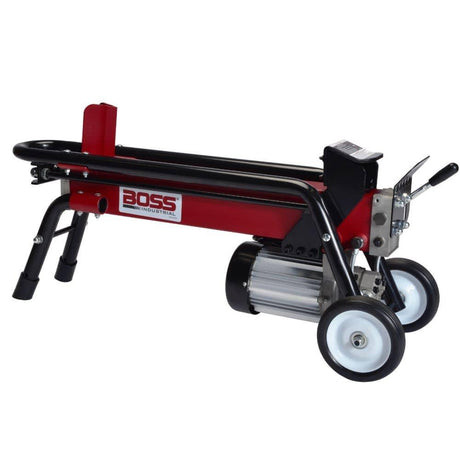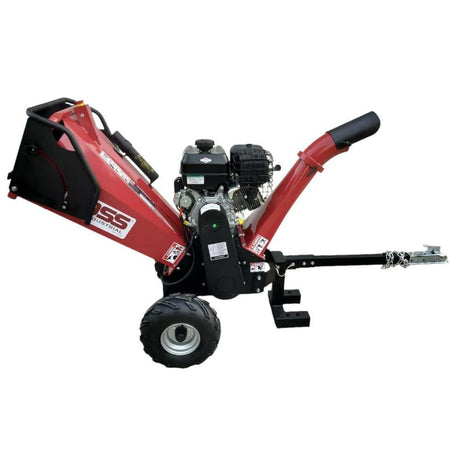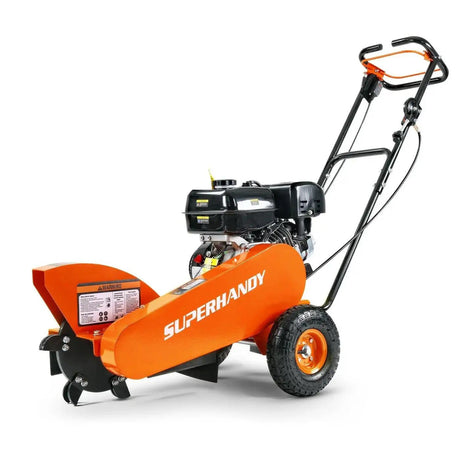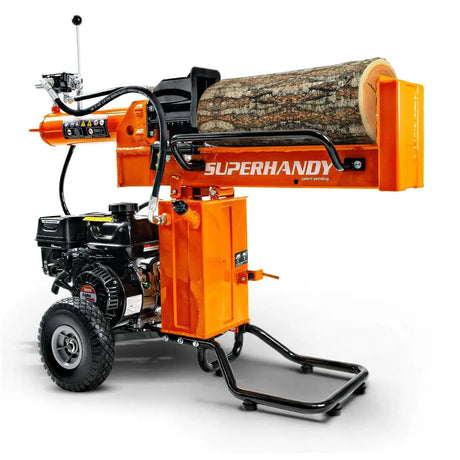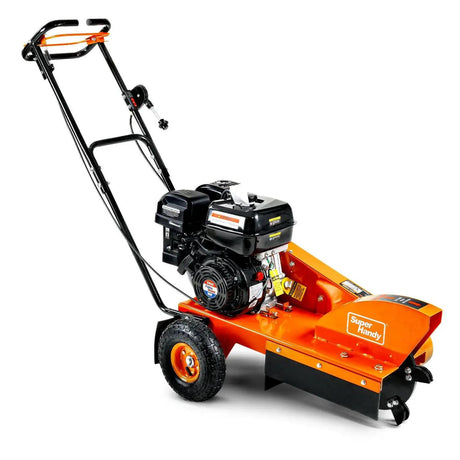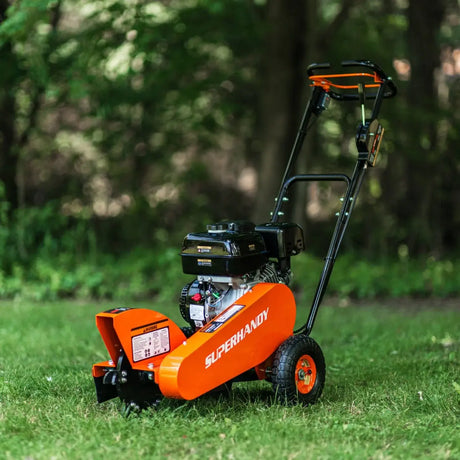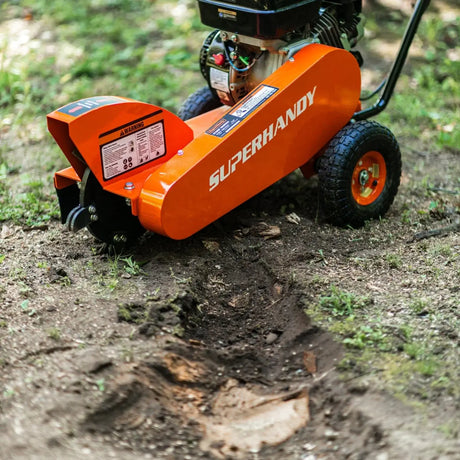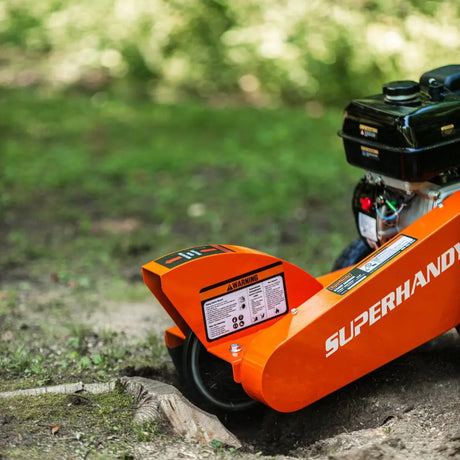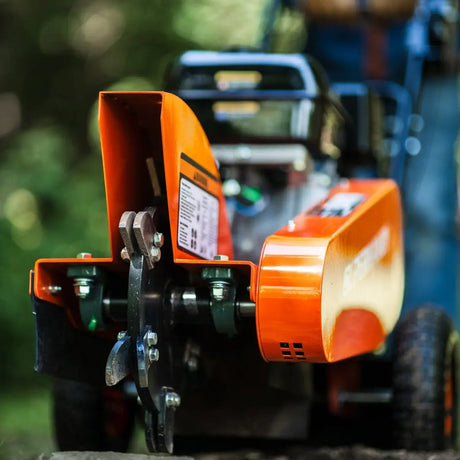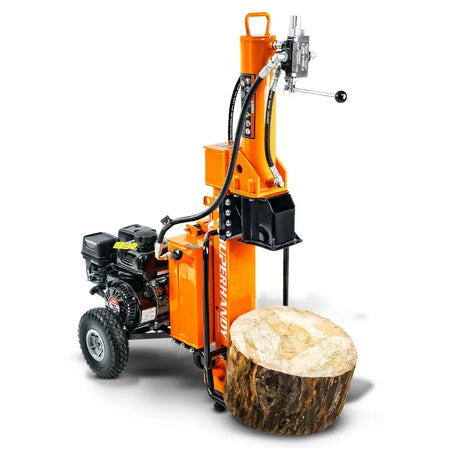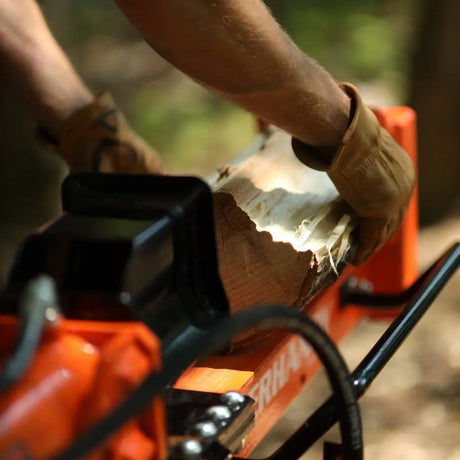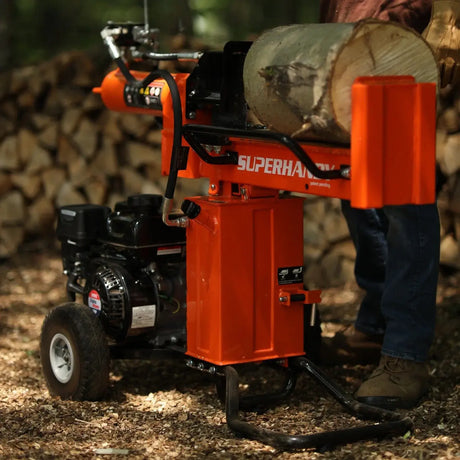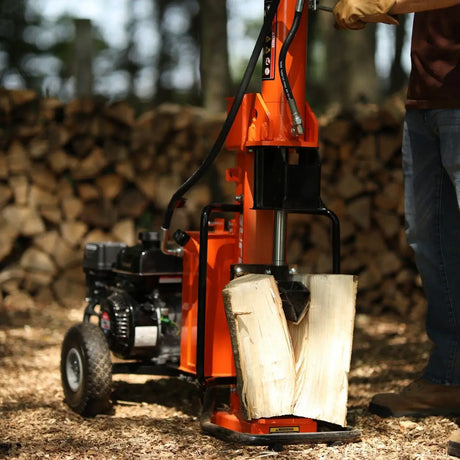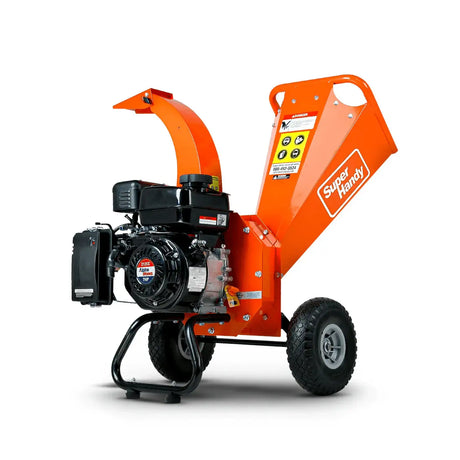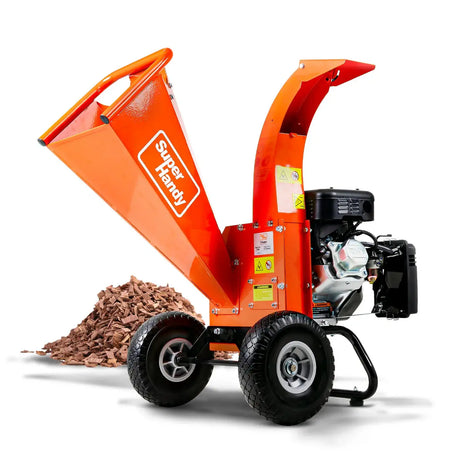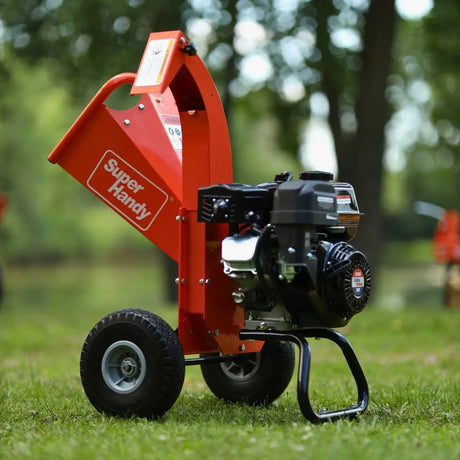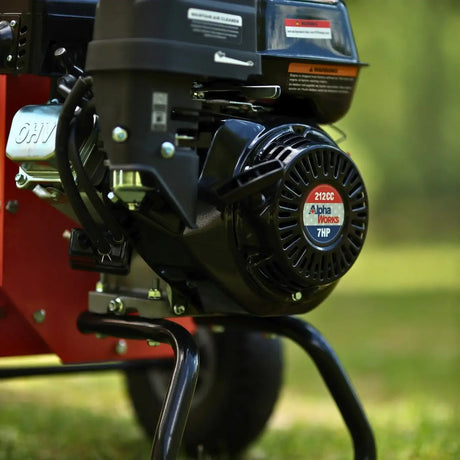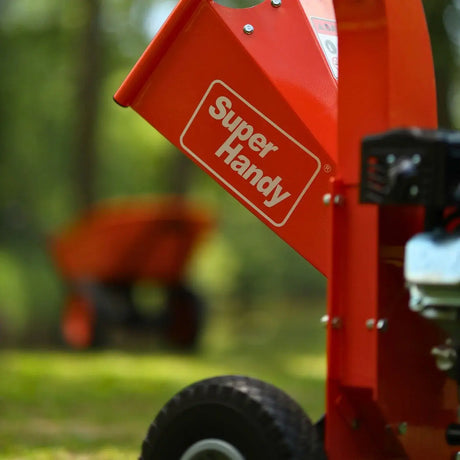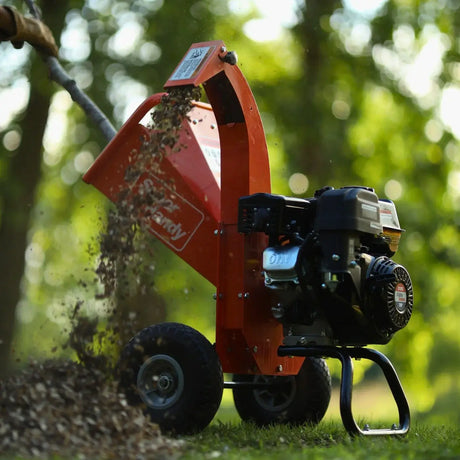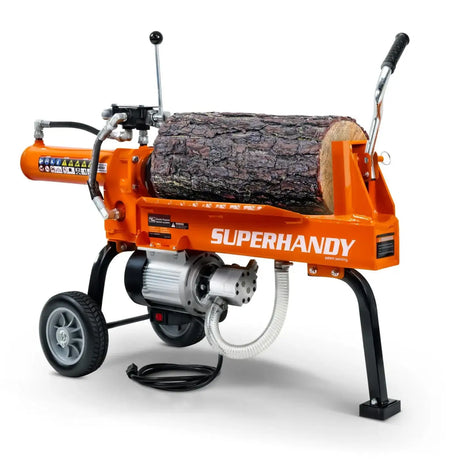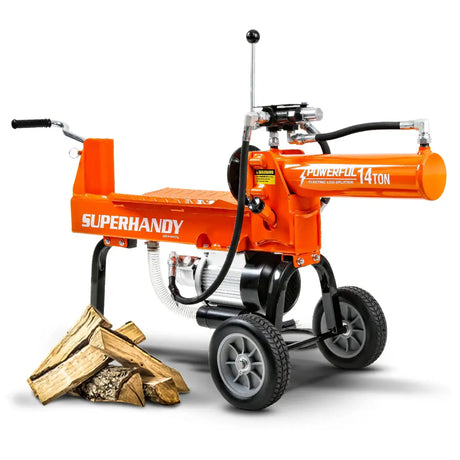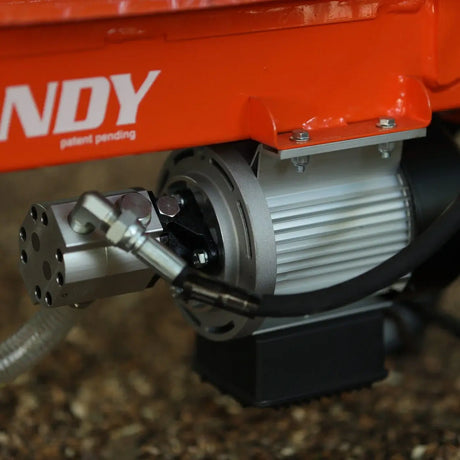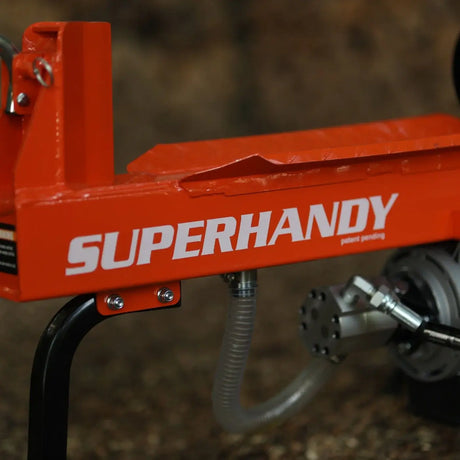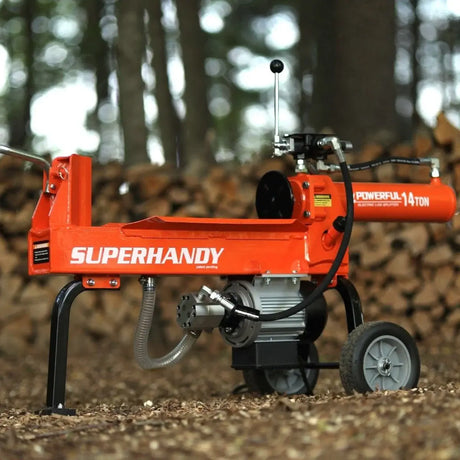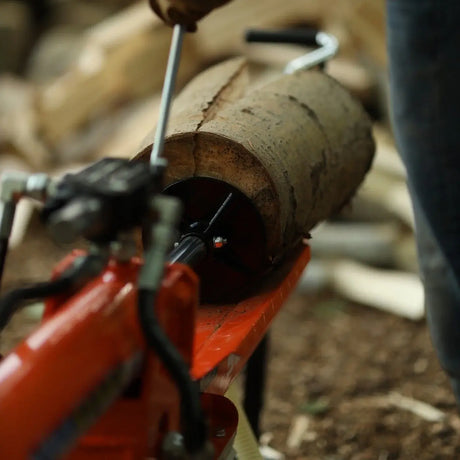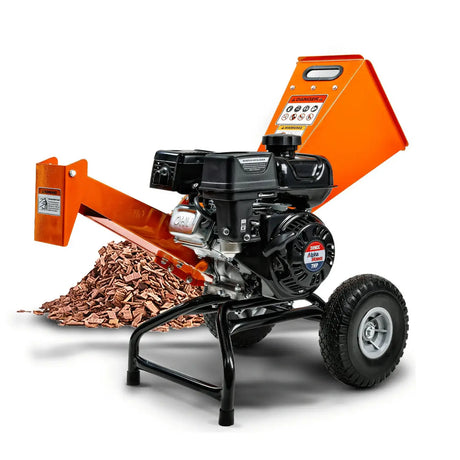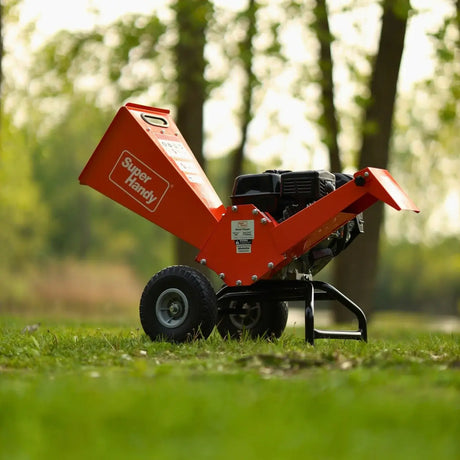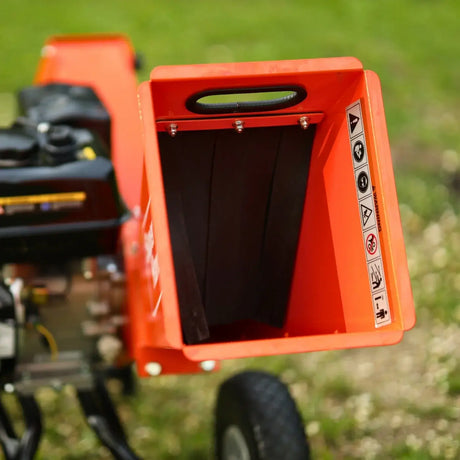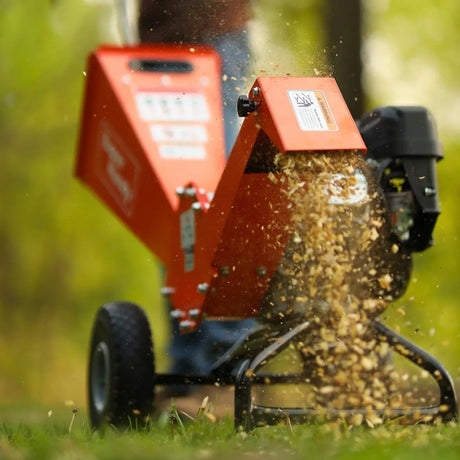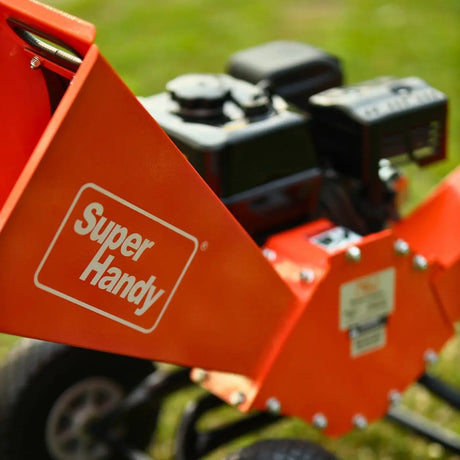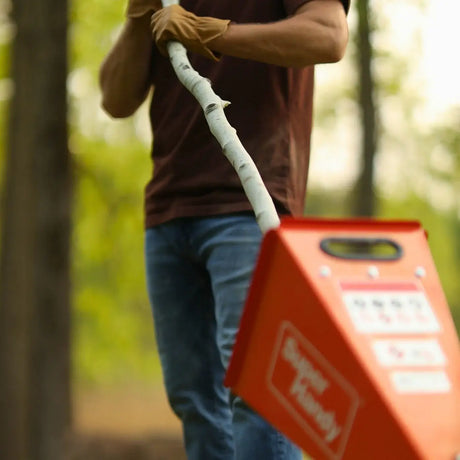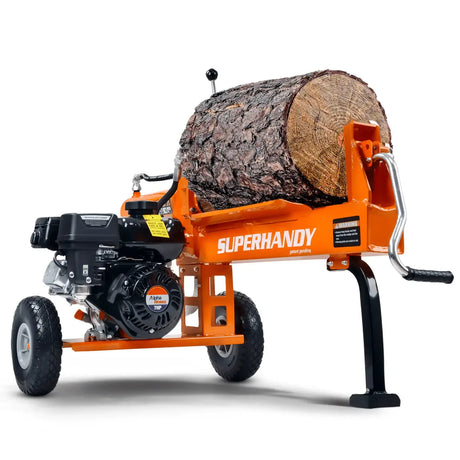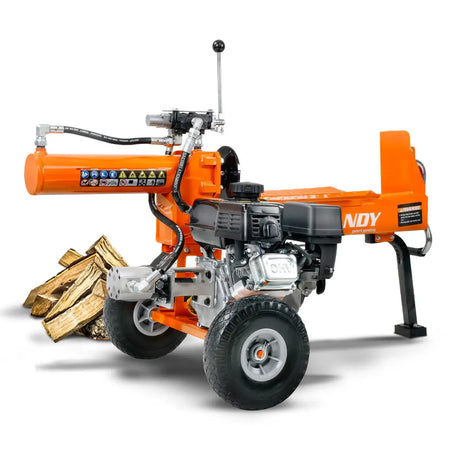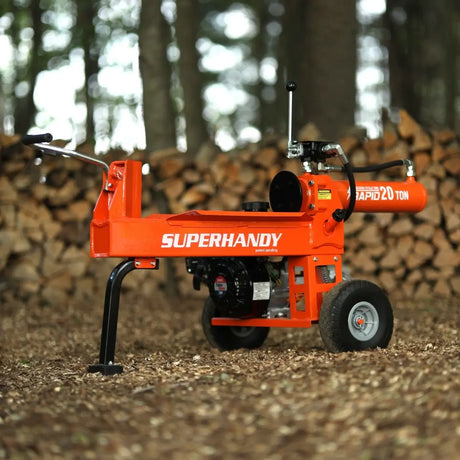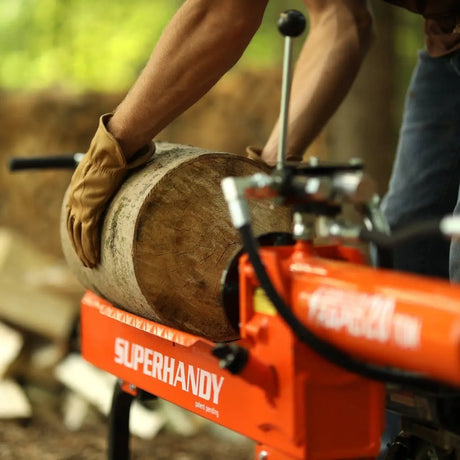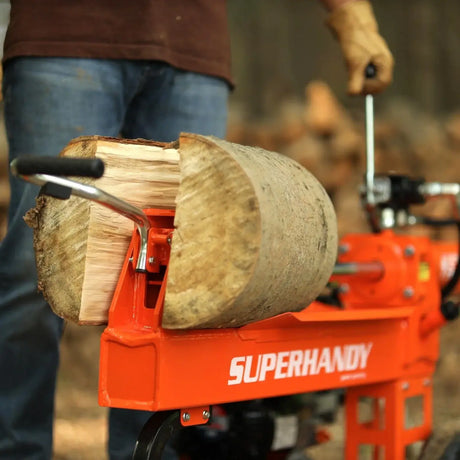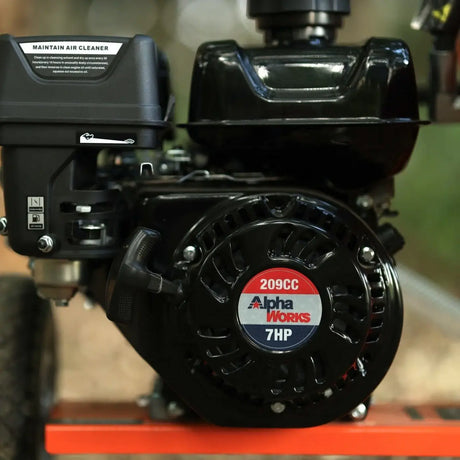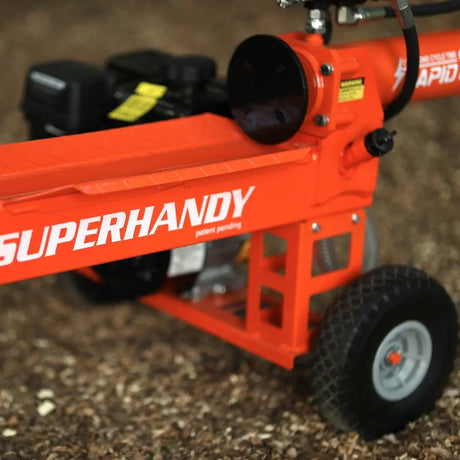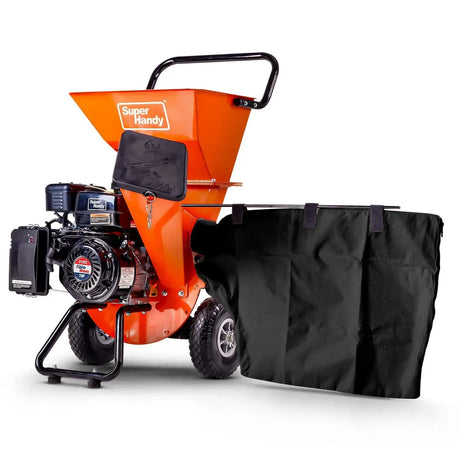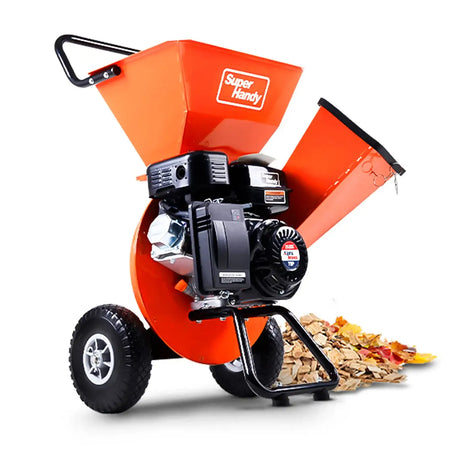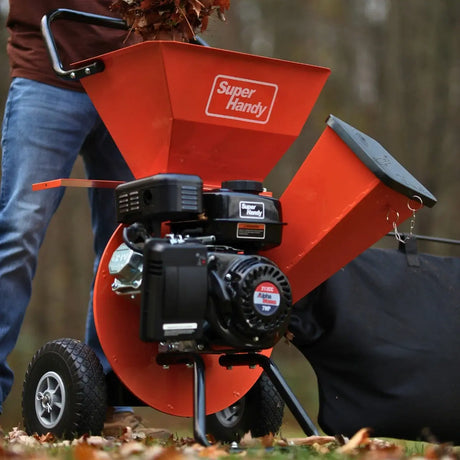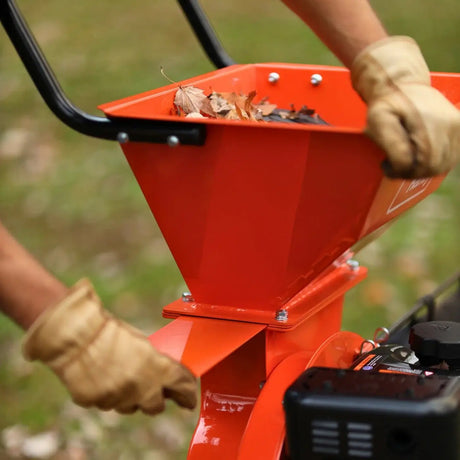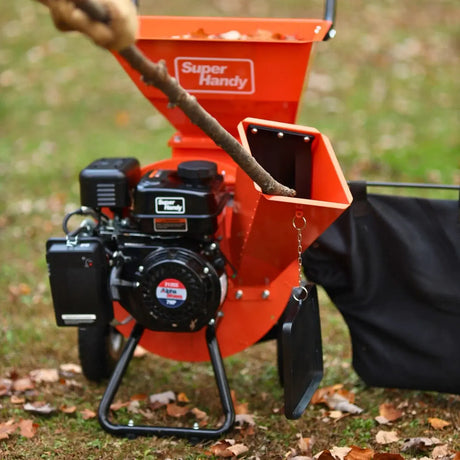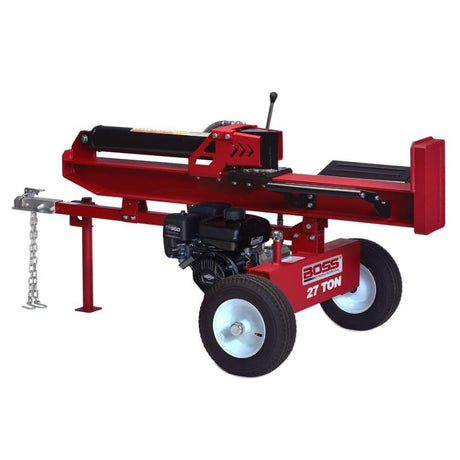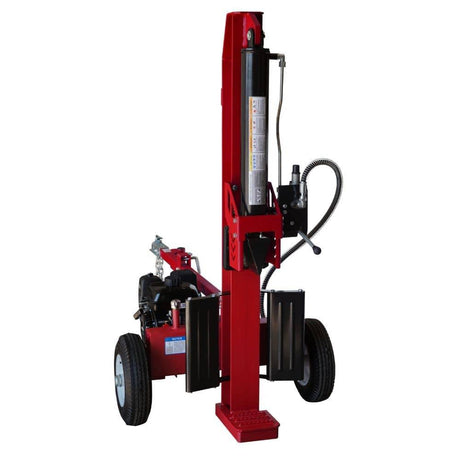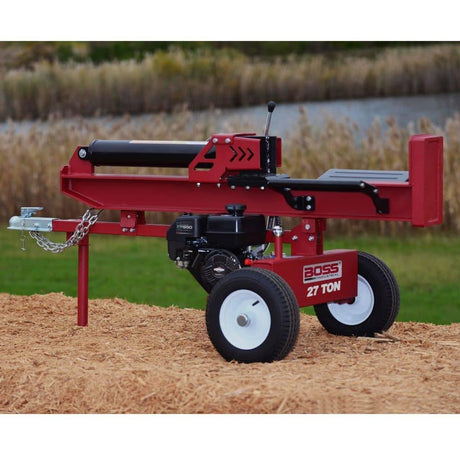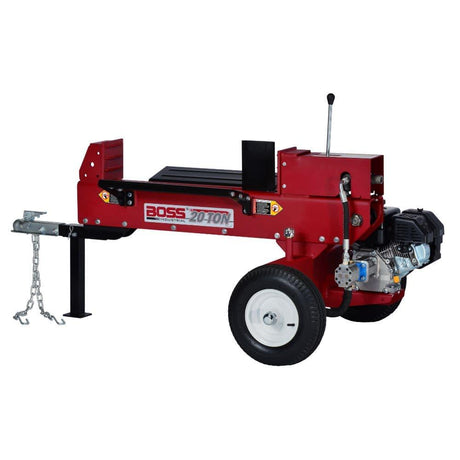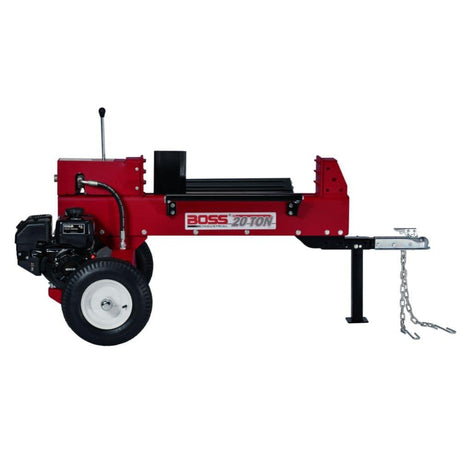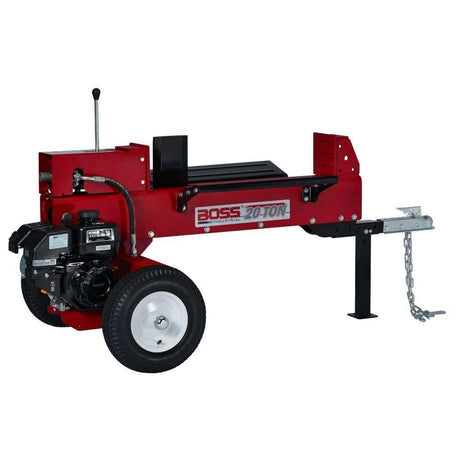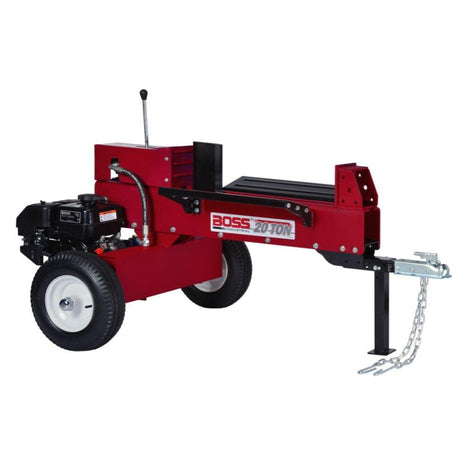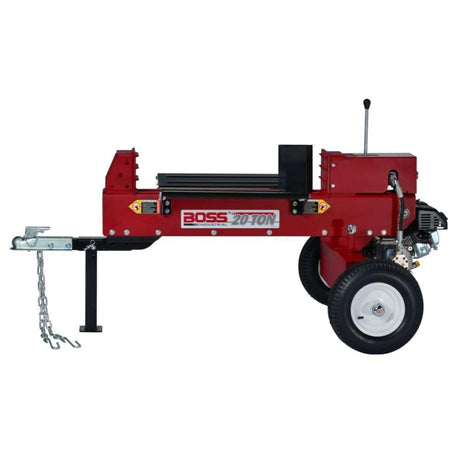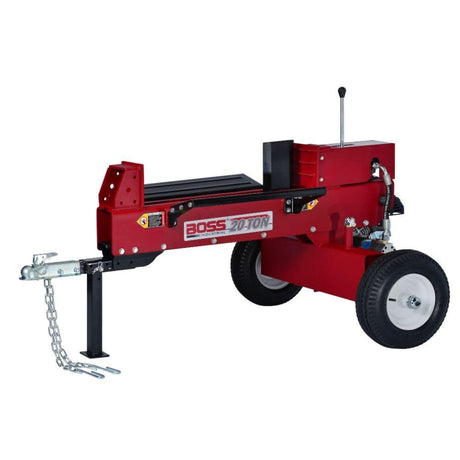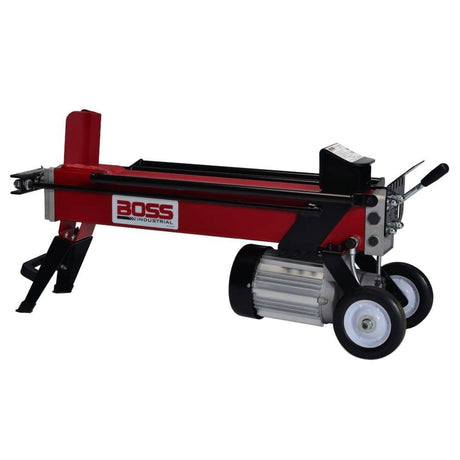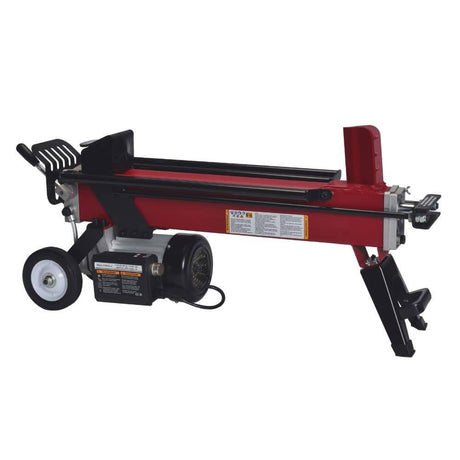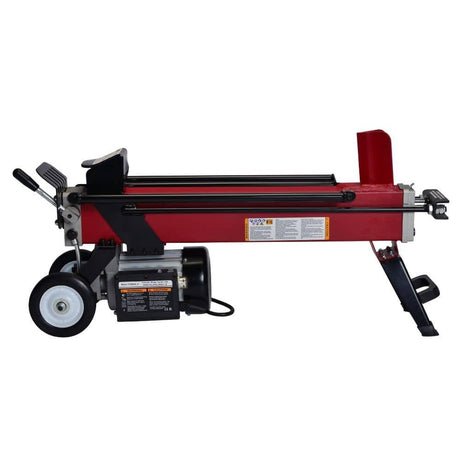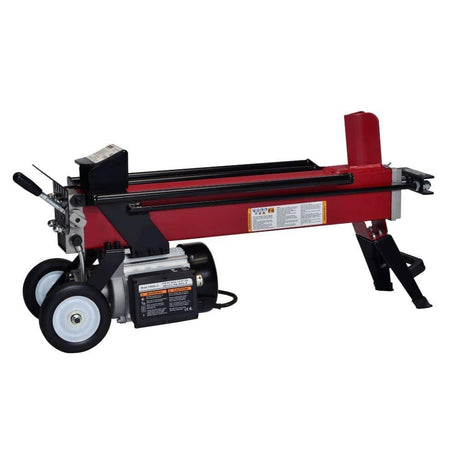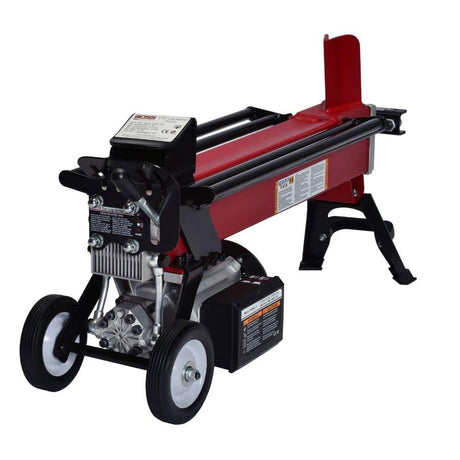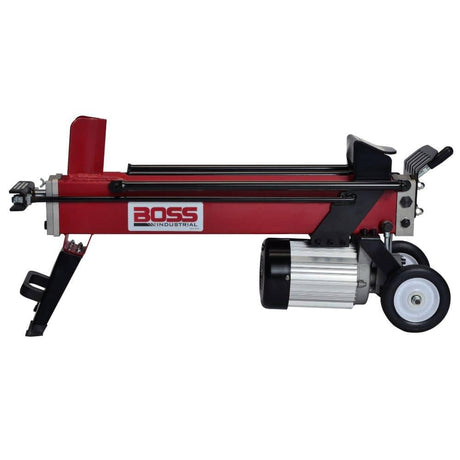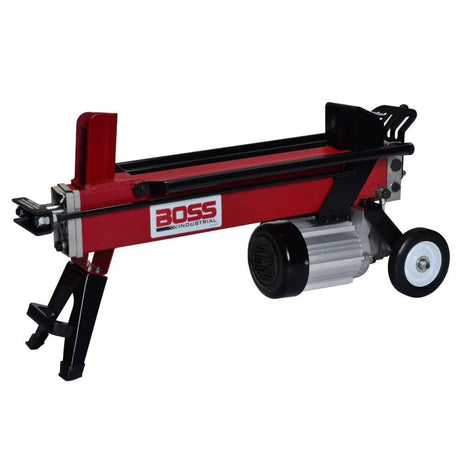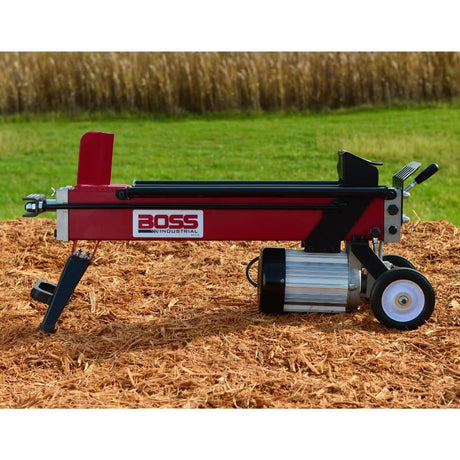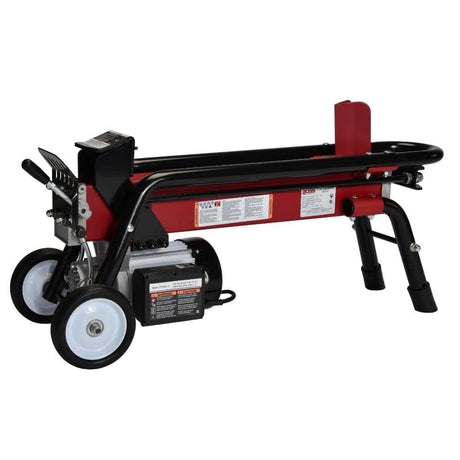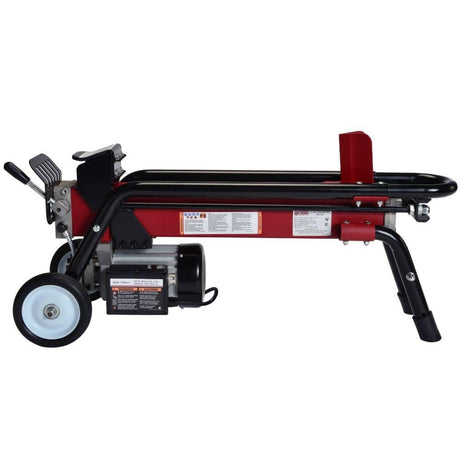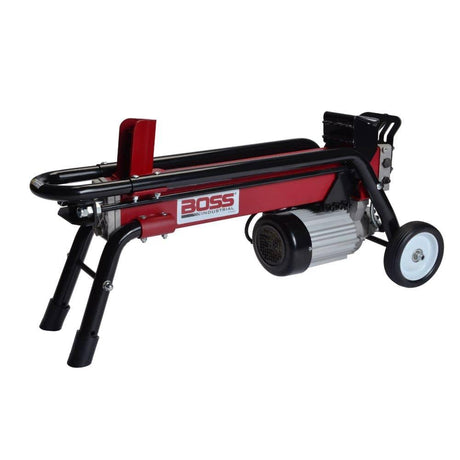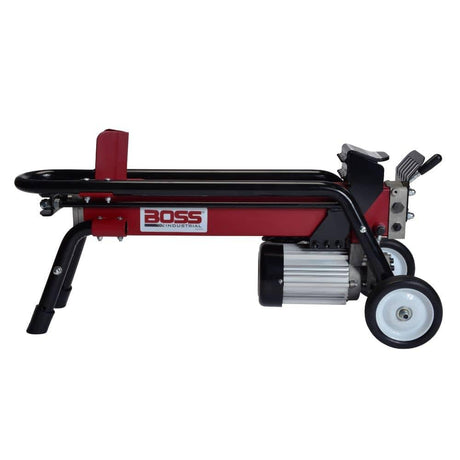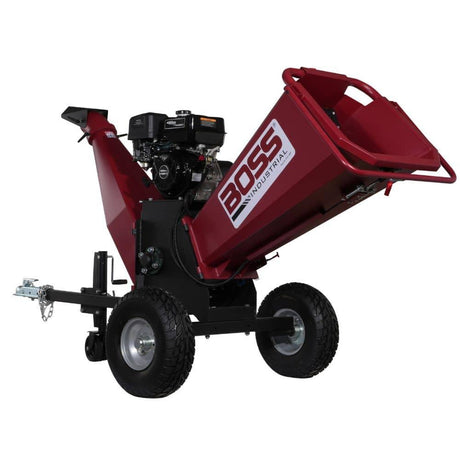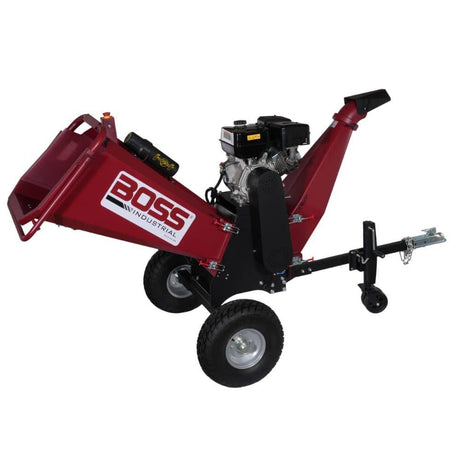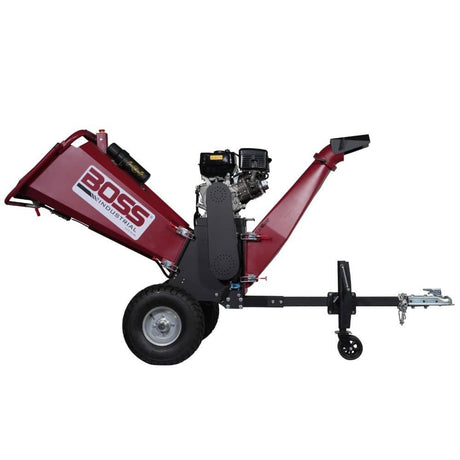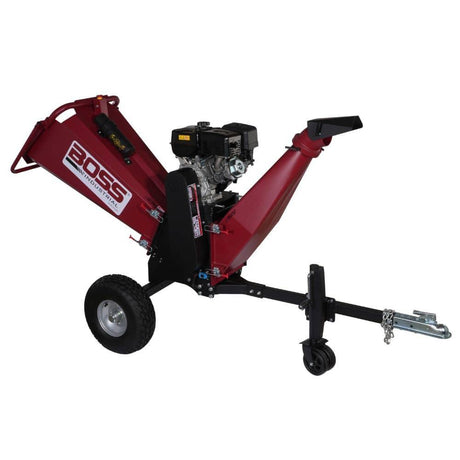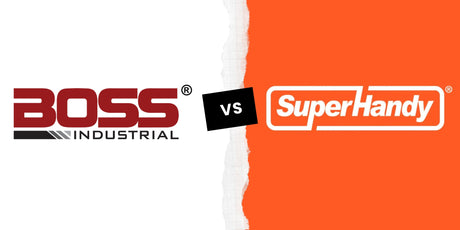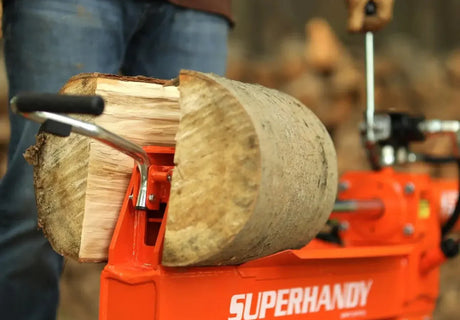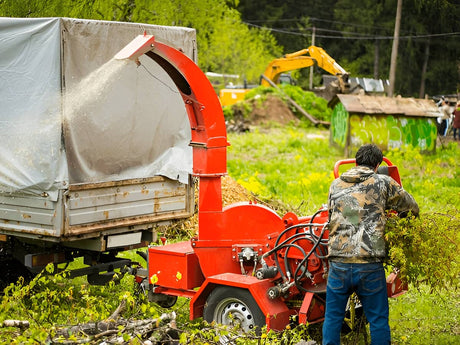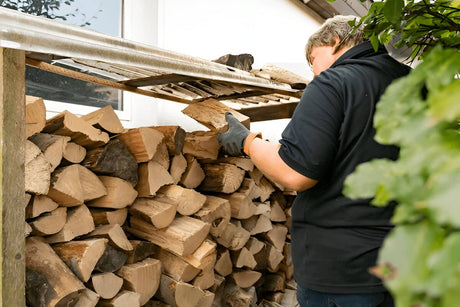If you're trying to find the right splitter for your wood processing needs, two names come up over and over: SuperHandy and Boss Industrial. Both offer strong reputations, reliable designs, and a wide selection of log splitters-but they serve very different buyers.
Let's dive into the key features, compare what matters, and figure out which brand fits your needs-whether you're just trying to split wood on weekends or processing serious volume all season long.
Quick Overview: Two Trusted Brands with Different Strengths
SuperHandy and Boss Industrial: What They Offer
At a glance, both brands seem similar. But when you look closer, the differences are clear.
- SuperHandy designs log splitters with a focus on versatility and ease-of-use. Their lineup includes 14-ton electric log splitters, 20-ton gas models, and even compact machines for light use. Ideal for homeowners, landowners, or part-time wood splitting.
- Boss Industrial, on the other hand, leans toward rugged, high-output machines. From 5-ton electric splitters to 37-ton gas powered splitters, they serve professionals, rental operations, and anyone needing raw tonnage day after day.
Both brands offer electric splitters and gas log splitters, giving you options depending on your workspace, property size, and volume of logs.
Choose electric for quiet, clean, and low-maintenance splitting. Go gas powered when you need tons of splitting force, faster cycle times, and the ability to split logs anywhere-no cords attached.
If you’re weighing power options, see our Gas vs Electric Log Splitters to find the best fit for your setup.
Main Differences at a Glance
Here's where things really start to stand apart:
| Key Feature | SuperHandy | Boss Industrial |
|---|---|---|
| Splitting Force | 14–25 tons | 5–37 tons |
| Motor Type | Electric log splitters, gas powered log | Electric, gas log splitters, kinetic log splitters |
| Log Capacity | Handles larger logs up to 20.5” × 16” | Handles dense hardwoods, tougher logs, and larger diameter logs |
| Portability | Compact and mobile with DOT approved wheels | Trailer-ready, heavy-duty designs with vertical mode options |
| Target User | Most homeowners, DIYers, small landowners | Firewood sellers, contractors, frequent wood splitting |
| Price Range | Budget to mid-range | Mid-range to expensive unit level |
SuperHandy delivers excellent performance at a great value-especially for those splitting medium logs or doing occasional use. Boss Industrial gives you more cycle times, more splitting force, and more ways to split logs-but with added size and fuel management responsibility.
So, if you need to split wood from smaller logs or want a zero emissions machine you can use indoors, SuperHandy's electric wood splitter line is a solid fit.
But if you're in the market for gas powered log splitters with blazing cycle time, massive log cradles, and the ability to power through tough hardwoods, Boss Industrial may be your last stop.
SuperHandy Log Splitters: Eco-Friendly Power with High Performance
What Makes SuperHandy Stand Out
SuperHandy has carved out a sweet spot in the log splitter market-offering eco-conscious performance without sacrificing splitting force. Whether you're working with medium sized logs, larger logs, or even the occasional tougher logs, SuperHandy offers reliable options that suit both residential and light wood processing tasks.
Here's what sets the brand apart:
- 14-ton and 20-ton options : From a 14-ton electric log splitter to a 20-ton gas log splitter, SuperHandy covers a wide performance range. You get enough tons of splitting force to tackle dense hardwoods and medium logs, without stepping into contractor-grade territory.
- Compact yet strong : These aren't bulky commercial tanks-but don't let the portable design fool you. With durable construction, strong steel frames, and smart layouts, most models roll easily, store well, and handle logs up to 20.5" long.
- Zero-emission electric models : The electric wood splitter lineup is ideal if you're working indoors, under a carport, or just prefer hassle free, low maintenance, and zero emissions operation. You won't have to deal with fumes, fuel management, or gas power startup issues.
SuperHandy gives most homeowners a perfect middle ground: enough splitting force to split logs without the bulk and upkeep of heavier gas powered models.

Top SuperHandy Models to Know
Here's a breakdown of the brand's most popular log splitters, and where each one shines:
14-Ton Electric Log Splitter : A strong contender in the ton electric class, this model brings serious force to an electric splitter format.
- Best for: Indoor use, processing firewood, and light to medium logs
- Cycle time: ~16 seconds
- Footprint: Compact, rolls easily with dot approved wheels
20-Ton Gas Log Splitter : A true workhorse for larger logs or frequent use.
- Best for: Landowners splitting tough hardwoods or heavier logs
- Cycle time: 7.5 seconds (a blazing cycle time for this class)
- Offers fast output with strong build quality and wide wedge for better efficiency
25-Ton Gas Log Splitter : For serious landowners or rural homeowners tackling constant piles of logs.
- Best for: Anyone doing repeated wood splitting or feeding multiple stoves
- Features: High splitting force, horizontal-to-vertical mode conversion for safe handling of heavy logs
Each unit is made with key features in mind: ease of transport, compact footprint, and enough raw tonnage to avoid frustration. You get power without buying an unnecessarily expensive unit.
Who Should Choose SuperHandy
SuperHandy is ideal for buyers who want smart power without overkill. Here's who it fits best:
- Eco-focused users who need real power without fumes : The electric log splitters are perfect for garages, barns, or quiet suburban lots. If you want a choose electric alternative to a gas powered log splitter, this is the one.
- Buyers looking for balance : SuperHandy machines sit comfortably between compact electric splitters and heavier-duty gas log splitters. You won't overpay, but you'll still get serious wood splitting capability.
- Those splitting medium to large logs regularly : If you handle 16-20" logs in your yard, but don't need to split cords of firewood daily, SuperHandy's lineup offers the perfect combo of tons of splitting force, reasonable cycle times, and two handed operation when needed.
With smart engineering, quiet operation, and practical key features, SuperHandy helps make wood processing simple and efficient-even for beginners.
If you're leaning toward a homeowner-friendly model, check out our top picks for the best log splitters for home use. We cover user-friendly options that deliver strong performance without breaking the bank.
Shop Superhandy Log Splitters →
Boss Industrial Log Splitters: Proven Durability for Any Job
Where Boss Industrial Excels
If you're after brute strength, longevity, and consistent performance, Boss Industrial doesn't hold back. Their lineup of log splitters is designed for heavy workloads and serious users-think processing firewood by the cord, not just clearing a weekend pile.
Here's what makes Boss Industrial stand out:
- Dual-action models for faster work : Many Boss gas log splitters feature dual-action hydraulic systems, meaning they split logs in both directions-cutting cycle times nearly in half. When you're tackling serious volume, this makes all the difference.
- Broad lineup from 5-ton electric to 37-ton gas-powered beasts : Whether you're just starting out or upgrading to a commercial-grade machine, Boss offers everything from electric splitters for occasional use, to 37-ton gas powered log splitters that dominate tough hardwoods and larger logs.
- Pro-level engineering with long-lasting components : With features like horizontal vertical conversion, patented hydraulic systems, dot approved wheels, and log cradles, Boss is built for real-world abuse. These machines are made to handle heavy logs, resist wear, and deliver performance you can count on-year after year.
To understand setup options, learn about Horizontal vs Vertical Log Splitters: Full Comparison Guide and choose the orientation that works best for your space.
Best Boss Industrial Models to Consider
Here are the flagship wood splitters that show off the brand's versatility and muscle:
ES7T20 - 7-Ton Electric Log Splitter : A favorite among most homeowners who want a reliable electric log splitter with solid splitting force.
- Quiet, compact, and low-maintenance
- Ideal for smaller logs and light use
- Features one-handed controls and safety features for ease of operation
GD20T24 - 20-Ton Dual-Action Gas Log Splitter : This ton gas model is a true workhorse for those needing both speed and gas power.
- Dual-direction splitting reduces cycle times drastically
- Perfect for contractors or those handling medium logs and dense hardwoods
- Horizontal vertical function makes managing heavy logs safer and more ergonomic
WD27T / WD37T - Heavy-Duty Gas Splitters for Extreme Logs : These gas powered splitters are built for serious log yards, firewood businesses, and high-output farms.
- Up to 37 tons of splitting force to handle larger diameter logs and tougher logs
- Blazing cycle time, heavy-duty frames, and durable construction
- Can split wood all day without overheating or breaking down
Every model comes ready to go-with minimal assembly-and is backed by the kind of build quality pros depend on.

Who Should Choose Boss Industrial
Boss isn't for everyone-but if you're regularly splitting force-demanding logs, it's probably the right splitter for you.
- Contractors and firewood sellers : If you split to sell, Boss gives you the raw tonnage, reliability, and low maintenance operation that maximizes your output without eating time or parts.
- Users needing consistent, long-cycle performance : These machines don't just split logs, they keep splitting. Even under pressure, their hydraulics hold strong-thanks to smart fuel management, rugged seals, and professional-grade engineering.
- Buyers who need real muscle and faster turnaround time : Whether you're clearing storm damage, prepping firewood, or managing a large rural property, gas powered log splitters like the WD37T offer unmatched speed and torque. Add in horizontal vertical versatility, and you're reducing physical strain while gaining serious throughput.
In short, Boss Industrial is for people who want to go hard, go fast, and never wonder if their log splitter can keep up.
Shop Boss Industrial Log Splitters →
SuperHandy vs Boss Industrial: Head-to-Head Comparison
Choosing the right splitter isn't just about brand-it's about what fits your workflow, your space, and your budget. Let's break down how SuperHandy and Boss Industrial stack up on real-world priorities: splitting force, setup, build quality, and overall value.
Splitting Force and Motor Power
5 to 37 tons across both brands - which range fits your work?
SuperHandy offers models ranging from 14-ton electric to 25-ton gas, hitting the sweet spot for most homeowners and rural property owners. They're ideal for medium logs, occasional large rounds, and consistent seasonal use.
Boss Industrial pushes further, starting at 5-ton electric splitters and scaling to 37-ton gas powered log splitters. That's serious power-enough splitting force to crush dense hardwoods, larger diameter logs, and full-time firewood workloads.
✅ Electric vs Gas: Pros, Cons, and Ideal Use Cases
| Feature | Electric Splitters | Gas Log Splitters |
|---|---|---|
| Power Source | 110V standard outlet | Independent, no cords |
| Tonnage Range | 5–14 tons | 20–37 tons |
| Ideal For | Smaller logs, indoor use, zero emissions | Remote work, tougher logs, blazing cycle time |
| Pros | Clean, quiet, low maintenance, easy start | High output, faster, raw tonnage |
| Cons | Lower capacity, tethered to outlet | Needs fuel, louder, heavier |
For a deep dive into splitter mechanics, check out our Hydraulic vs Kinetic Log Splitters: Full Comparison Guide to see how they stack up.
SuperHandy leans toward efficiency and quiet wood processing. Boss leans toward serious volume, gas power, and hard-hitting torque.
Whether you're splitting small backyard logs or dense hardwood rounds, it's important to match the machine to the job. Use our log splitter sizing chart to see how many tons you really need based on wood type, moisture content, and log diameter.
Portability and Setup
Which models tow, which ones roll, and what fits in a shed?
SuperHandy is all about compact footprint and portable design. Their electric log splitters are lightweight and roll into storage easily. Their gas units include dot approved wheels and are towable with a lawn tractor or ATV.
Boss Industrial machines are bulkier but better equipped for hauling. Their horizontal vertical models like the WD27T or WD37T are designed for trailering and field deployment. Just keep in mind-they take up more space in your shop or shed.
✅ Ready-to-use setups vs DIY assembly
- SuperHandy machines often come partially assembled, with quick startup for beginners.
- Boss offers more build quality, but expect more setup time-especially on dual-action and pro-grade machines.
If you want to roll out of the garage and split in minutes, SuperHandy is more hassle free. If you're building a high-output wood splitting station, Boss gives you a stronger long-term base.
Build Quality and Durability
Materials, frame strength, weather protection
Boss wins when it comes to sheer strength. Their gas powered splitters use thicker steel, reinforced beam rails, and pro-grade seals-perfect for repeat splitting cycles and year-round use.
SuperHandy still impresses. Their ton gas and electric wood splitter models use powder-coated frames, smart hose routing, and sealed motors. They're more than enough for most splitters working seasonally or part-time.
And while both brands have excellent reputations, Boss's designs are made to ensure proper operation under physical strain-especially with heavy logs and cold starts.
Price and Value
Entry-level to premium comparison
- SuperHandy sits in the mid-range: ~$650 for a ton electric model, ~$1,200-$1,400 for gas powered models with 20-25 tons. You get strong performance without the premium price tag.
- Boss Industrial starts around $400 for basic electric, but their commercial-grade splitters hit $2,000-$3,000+.
✅ What you get for your budget: homeowner vs commercial ROI
| Budget Range | SuperHandy Delivers | Boss Industrial Delivers |
|---|---|---|
| $500–$900 | Reliable electric splitters for light use | Entry-level 5–7 ton models for residential needs |
| $1,200–$1,600 | Strong ton gas options, towable, mobile | Dual-action 16–20 ton for contractors |
| $2,000+ | Higher-tier gas log splitters (limited) | Commercial-grade wood splitters for daily jobs |
SuperHandy offers best-in-class value for home use and light commercial applications. Boss Industrial is a better fit when you're looking at ROI from processing firewood, doing landscaping jobs, or supplying customers.
Before committing to a gas-powered model, make sure you understand the fuel usage based on its engine class. This fuel consumption table shows exactly how much gas different tonnage levels burn—so you can plan your costs over time.
Final Verdict: Which Log Splitter Fits Your Needs Best?
You've seen the side-by-side. Now here's the bottom line: both SuperHandy and Boss Industrial deliver real value-but they're built for different kinds of users. Whether you're looking for clean, quiet, electric log splitters or serious gas powered log splitters with crushing strength, the decision comes down to how often you split wood, how big your logs are, and what kind of return you expect from your machine.
Still not sure which type of splitter suits your land, workflow, and firewood needs? Our Log Splitter 101 guide breaks down everything first-time buyers need to know—from motor types and splitting tonnage to maintenance tips and safety features.
Choose SuperHandy If You Want Reliable, Balanced Splitting
Best for homeowners, landowners, and eco-conscious users
SuperHandy hits the sweet spot between performance and practicality. If your goal is to split medium logs, clear seasonal piles, or prep firewood without noise, fumes, or constant maintenance, this is the right splitter for you.
- Electric splitters like the 14-ton model are perfect for light use and zero emissions indoor work.
- Ton gas options like the 20- and 25-ton units offer enough splitting force for larger logs-without the size or cost of a commercial machine.
- Their portable design, compact footprint, and ease of storage make them a smart pick for most homeowners who want to keep things simple-and effective.
If you're looking for a low maintenance, efficient way to handle regular wood splitting without breaking your back or your budget, SuperHandy gets it done with less physical strain and more control.
Choose Boss Industrial If You Need Serious Power and Speed
Best for contractors, firewood operations, and high-volume use
If you deal with tough hardwoods, tight schedules, or serious volume, Boss Industrial is built to keep up.
- The lineup ranges from compact electric wood splitters to massive 37-ton gas powered splitters, all engineered for consistent performance.
- Features like horizontal vertical modes, dual-action hydraulics, and fast cycle times cut down on effort and speed up your output.
- Their durable construction and rugged design help you split logs longer without worry-even when dealing with larger diameter logs, heavy logs, or rough terrain.
Boss is built for pros-or homeowners who want commercial ROI from every log splitter session.
In short:
- Want a hassle free, affordable, efficient machine with strong performance? ✅ Choose SuperHandy.
- Need raw tonnage, industrial strength, and faster production? ✅ Boss Industrial is your brand.
Both brands make excellent wood splitters. It's just about choosing the one that's right for your job, your land, and your workflow.


